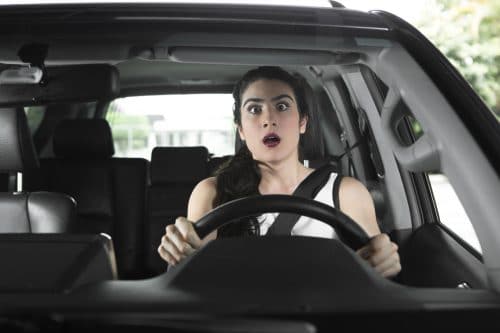Learn about the factors that affect reaction time

When assigning liability for a car accident, the concept of reaction time often needs to be considered. For example, in the case of a rear end accident, liability might hinge on why driver of the rear vehicle did not have enough time to react and avoid the collision. Was it really because the car they hit decelerated at a rate that made an accident unavoidable? Or was it perhaps because their reaction time was shortened by tailgating or delayed by distraction?
To answer these questions, accident reconstructionists often use a standard number such as 1.5 seconds to stand in as the reaction time of a reasonably careful person. While this may be useful for generalizing, the reality is that there is no such thing as a standard reaction time, because reaction time is made of several distinct components, all of which can be affected by multiple variables.
Components of Reaction Time
Mental Processing Time: Between the moment the brain detects a hazard and the moment a course of action is chosen, there are actually four different mental processes that must happen. First, sensory input needs to be detected. Second, that sensory input must be interpreted. Next, the driver has to process other information from the scene to recognize the risk of an accident. And finally, the driver has to decide how to respond. For example, this can be summed up as a driver “thinking” the following four things:
- I see a shape in the road
- The shape is a person
- Given my speed and theirs, an accident will happen if I do nothing
- I am going to steer left instead of braking
Movement Time: Once a reaction has been decided upon, the driver still has to physically move their body to carry it out. In general, a stressful situation like an impending car accident will make it easier to make gross motor movements but more difficult to make fine detailed movements. So moving your foot from the gas pedal to the brake pedal should happen quickly, but nonetheless it will take time.
Vehicle Response Time: Even after the driver has decided on a response and executed it, it will still take time for the vehicle to respond. For example, the brakes do not instantaneously engage when the pedal is stepped on. Instead, it takes about 0.3 seconds for this to happen. And of course, a vehicle needs time to come to a stop after the brakes are applied.
Have You Been Injured in an Accident that Could Have Been Avoided?
Many different factors can affect reaction time, from the driver’s level of alertness to visibility to road conditions and even the mechanical condition of the vehicle. In some cases, there may not have been any way to avoid the accident, even with perfect reactions. However, in other cases, someone’s negligence may have resulted in a poor reaction time and caused the car accident.
If you have been injured in an accident that could reasonably have been avoided had the other driver not been negligent, you are entitled to compensation. For more information about liability in car accident cases—and a free case evaluation—please call The Law Offices of Larry H. Parker at 800-333-0000.



